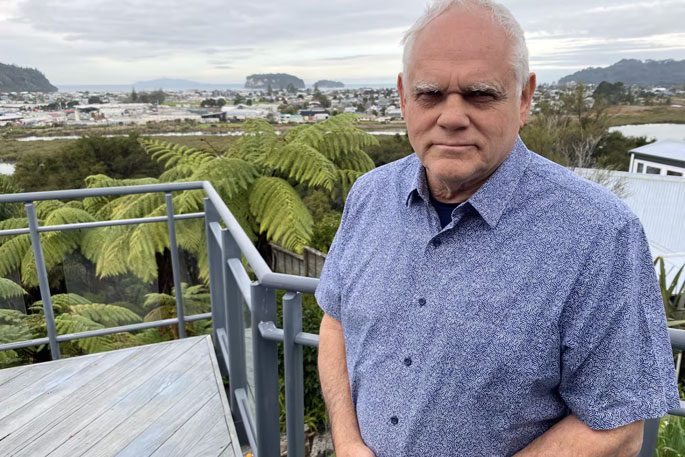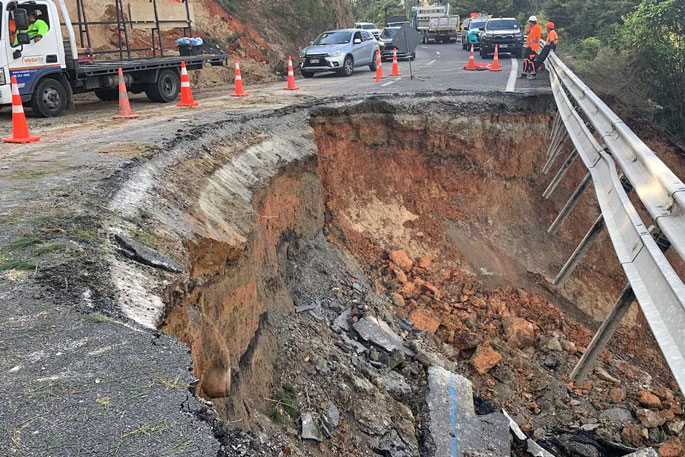Coromandel has been turned down in its bid for $248 million in transport network resilience funding under the National Land Transport Programme.
The 2024-2027 Waikato Regional Land Transport Plan (RLTP) contained a bid for $248 million in Crown funding for the resilience project, but Government did not include it in the final 2024-2027 National Land Transport Programme (NLTP).
Thames-Coromandel District Council had worked closely with NZ Transport Agency Waka Kotahi and the Waikato Regional Council on the investment case for more than 18 months.
A spokesman for Thames-Coromandel District Council said they had worked together to form a proposal to make state highways and local roads more resilient to weather events like those of early 2023.
However, there was nothing in the funding status when the NLTP landed.
The spokesman confirmed NZTA had since allocated $21 million to repair and remediate state highways (mainly SH25) in the Coromandel area in this current financial year.
“Our council is also funding ongoing local road repair and maintenance with funding support from NZTA.”
A Waikato Regional Council spokesperson said it was their understanding the $248m would have delivered four phases that made up the Coromandel network resilience over slips and flood response.
It was expected to entail a single stage business case, property acquisition, design and construction.
“We understand some work may be covered under NZ Transport Agency Waka Kotahi’s maintenance and operations programme of works; however, it is unclear how much of this will be targeted to the Coromandel Peninsula and would address issues of resilience.”
NZ Transport Agency Waka Kotahi director of regional relationships for Waikato Bay of Plenty David Speirs said the $248m figure meant the difference between providing “good” and “amazing” resilience throughout the Coromandel roading network.
“I think what we have done, we have done really well in context of what happened during Cyclones Hale and Gabrielle; I don’t think people need to be stressed as things will be better next time.”
Speirs said the $248m figure was simply not affordable, quoting a budget of $100m in transport network resilience funding for the entire country in the 2024-2027 NLTP.
“It is a big difference, the $248 million is not affordable; the thing to bear in mind is that when you are faced with $29 billion in transport network resilience funding requests from around the country, you have an obvious gap.”
Speirs said there was still money budgeted for slip sites across the Coromandel roading network, not specifically targeted at resilience as such, but with a focus on a more resilient network.
He said about 50 slip sites across the district had been fixed to date with the main focus on State Highway 25.
The Coromandel had “aspirations” in its bid for the funding as there would be another 50 potential slips to look at, he said.
“There are a whole lot of other sites where we will see slips, we still have funding for slip sites; there is money, but it is not money that is targeted at resilience.
“If we got those events again (Cyclones Hale and Gabrielle) we hope the impact would be much less, so it is now more resilient as a consequence; resilience is how quickly you can get things going.”
 Thames-Coromandel deputy mayor Terry Walker Photo/Al Williams.
Thames-Coromandel deputy mayor Terry Walker Photo/Al Williams.
Thames-Coromandel deputy mayor Terry Walker said it was disappointing news which would force the council to go back to the table with some “serious work to do”.
“There were large assumptions made in the Long-Term Plan (LTP), the few million dollars we have been given is OK, but in terms of resilience money, we missed out.
“It will put us back big, and we will have to rethink the capacity, so we have some serious work to do; when we go back to the ratepayers, there will be expectation.”
Walker said the council had received a “pretty serious vibe” from the previous Government in terms of resilience funding, and that it “would happen, but it hasn’t.”
 National MP for Coromandel Scott Simpson and Transport Minister Simeon Brown at Scott's office in Thames when Brown announced three bridges in the Coromandel would be replaced.
National MP for Coromandel Scott Simpson and Transport Minister Simeon Brown at Scott's office in Thames when Brown announced three bridges in the Coromandel would be replaced.
Coromandel MP Scott Simpson said he was confident priorities for a nationwide assessment had been carefully balanced against requests from regions.
“Our (Coromandel) region is not unique, and we are not alone in wanting more; that doesn’t mean more can’t be done and I will always continue to advocate for our region.”
While the funding request had been excluded from the 2024-27 NLTP, other high priority activities such as the Roads of National Significance Cambridge to Piarere ($880,011,500, RLTP) to ($1,553,904,00, NLTP) and Hamilton Southern Links ($346,342,050, RLTP) to ($458,492,000, NLTP) had been given funding boosts and tagged as probable.
Funding had been approved for the replacement of three bridges in the Coromandel, confirmed in July when Transport Minister Simeon Brown said SH25 Pepe Bridge, SH25 Ramarama Stream Bridge, and SH27 Ohinekaua Stream Bridge would be replaced, with construction expected to begin in mid-2025 and completed by mid-2027.
 Coromandel residents in Tairua party on the streets as they welcome tourists back travelling on the reopened SH25A bridge in December 2023. Photo / Cheree Kinnear.
Coromandel residents in Tairua party on the streets as they welcome tourists back travelling on the reopened SH25A bridge in December 2023. Photo / Cheree Kinnear.
The transport minister could not put a figure on what it would cost to replace the Coromandel bridges but said the combined cost of nine projects across the country would be between $100 and $125 million.
Brown, in July, also confirmed $21 million in Government funding for Coromandel state highways as works continued in the region following the devastating effects of the cyclones.
 Tairua locals save a boat washed ashore in February 2023 after Cyclone Gabrielle dropped carnage on the Coromandel. Mike Scott.
Tairua locals save a boat washed ashore in February 2023 after Cyclone Gabrielle dropped carnage on the Coromandel. Mike Scott.



0 comments
Leave a Comment
You must be logged in to make a comment.